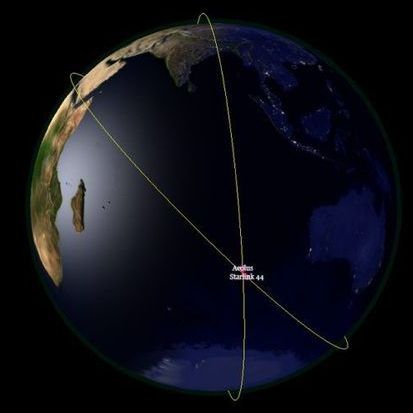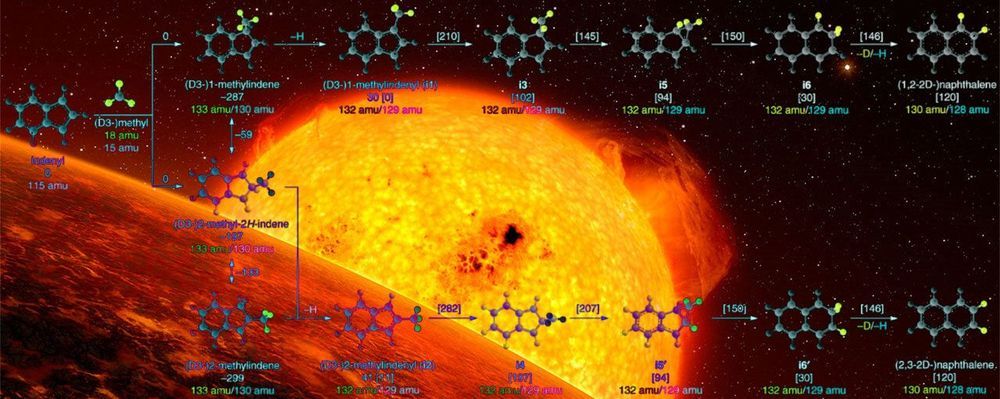Overnight atmospheric changes on Mars can explain why two spacecraft measure vastly different concentrations of methane.
According to media reports, SpaceX refused to move its satellite even after it was alerted by the US military, which monitors space traffic.
AgeX CEO Dr. Michael West discusses the technology behind cell aging reversal described in the publication “Toward a Unified Theory of Aging and Regeneration.”
Asteroid bombshell: Scientists stunned
Posted in space
SCIENTISTS have been left left stunned by new, incredibly high-resolution images of one of the oldest objects in the solar system.
A team of scientists has discovered a new possible pathway toward forming carbon structures in space using a specialized chemical exploration technique at the Department of Energy’s Lawrence Berkeley National Laboratory (Berkeley Lab).
The team’s research has now identified several avenues by which ringed molecules known as polycyclic aromatic hydrocarbons, or PAHs, can form in space. The latest study is a part of an ongoing effort to retrace the chemical steps leading to the formation of complex carbon-containing molecules in deep space.
PAHs—which also occur on Earth in emissions and soot from the combustion of fossil fuels—could provide clues to the formation of life’s chemistry in space as precursors to interstellar nanoparticles. They are estimated to account for about 20 percent of all carbon in our galaxy, and they have the chemical building blocks needed to form 2-D and 3D carbon structures.
Square Enix studio Luminous Productions has unveiled a new tech demo called “Back Stage” that shows how it uses ray-tracing tech. The demo is rendered in real-time.
Luminous Productions was established last year and staffed with former Final Fantasy XV staff. The game’s director Hajime Tabata initially headed up the studio. He has since left Square Enix.
As Siliconera points out, this tech demo shows off next-gen possibilities for its in-house Luminous Engine. Here, the real-time ray tracing shows the character’s face and emotions reflected in a realistic way that simply isn’t possible in previous real-time rending tech.
The Race to Own One Bitcoin
Posted in bitcoin, cryptocurrencies, economics, finance
Owning one full bitcoin is becoming a recognized attainment goal. And thereby hangs a tale.
Is it just a numbers game? Isn’t the unit a bit arbitrary and meaningless?…
The logistics and the math are compelling. I recognized the importance of reaching this personal milestone more than 8 years ago. But I was a nobody. No one cared. Then, in April 2019, we started to see articles in legitimate venues about this concept—and articulated in exactly this way. I borrowed the title of this post from this article in Medium.
Who Says So?
X conducted a static-fire test Thursday (Aug. 29) of the Falcon 9 rocket that will send two NASA astronauts to the International Space Station in the near future.
“Dark energy is incredibly strange, but actually it makes sense to me that it went unnoticed,” said Noble Prize winning physicist Adam Riess in an interview. “I have absolutely no clue what dark energy is. Dark energy appears strong enough to push the entire universe – yet its source is unknown, its location is unknown and its physics are highly speculative.”
Physicists have found that for the last 7 billion years or so galactic expansion has been accelerating. This would be possible only if something is pushing the galaxies, adding energy to them. Scientists are calling this something “dark energy,” a force that is real but eludes detection.
One of the most speculative ideas for the mechanism of an accelerating cosmic expansion is called quintessence, a relative of the Higgs field that permeates the cosmos. Perhaps some clever life 5 billion years ago figured out how to activate that field, speculates astrophysicist Caleb Scharf in Nautil.us. How? “Beats me,” he says, “but it’s a thought-provoking idea, and it echoes some of the thinking of cosmologist Freeman Dyson’s famous 1979 paper ”Time Without End,” where he looked at life’s ability in the far, far future to act on an astrophysical scale in an open universe that need not evolve into a state of permanent quiescence. Where life and communication can continue for ever.








